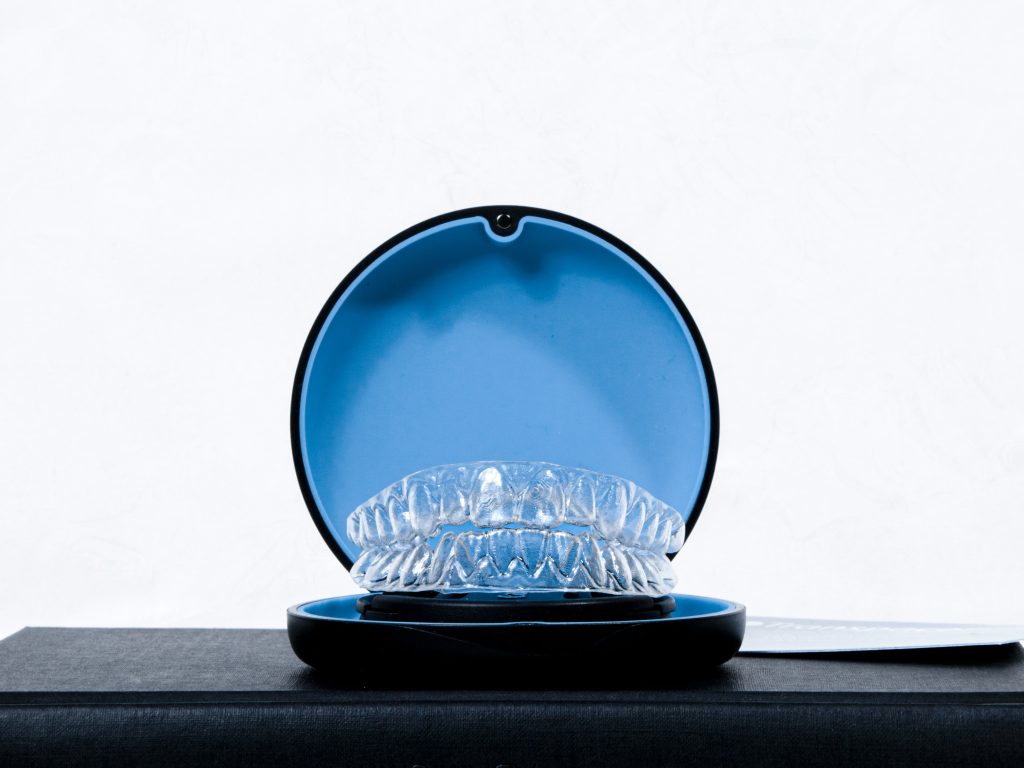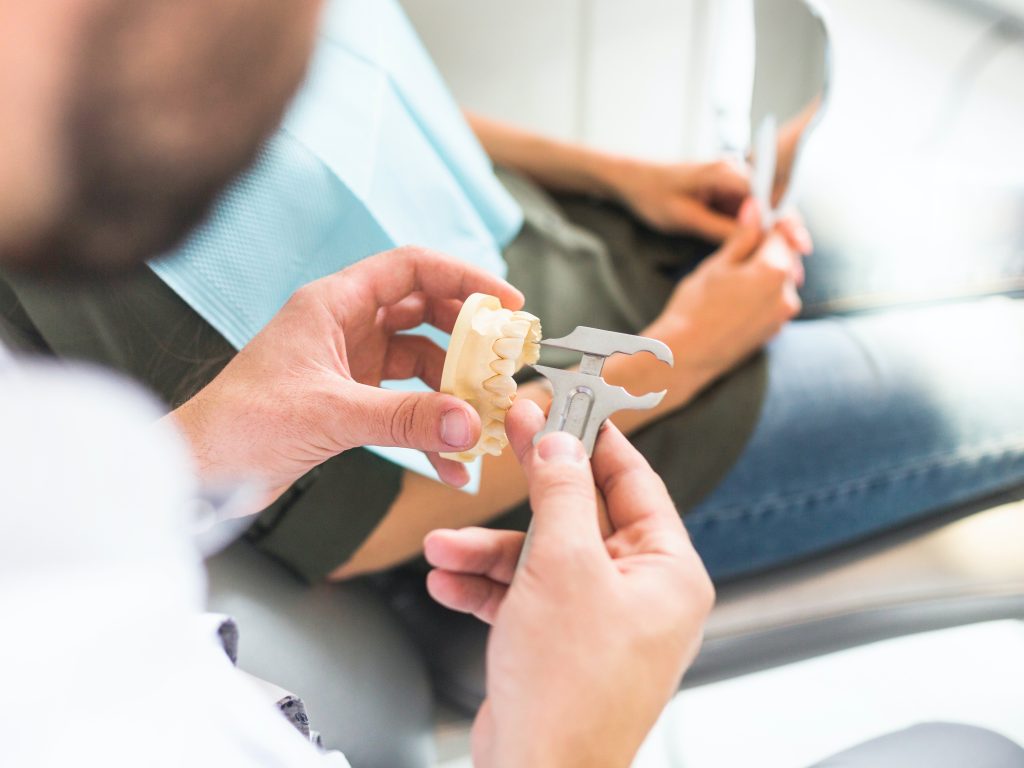Orthodontics has always focused on creating straighter, healthier, and more beautiful smiles. Over the years, technological advancements have continuously transformed how orthodontic care is delivered. Treatments have become faster, more comfortable, and more precise. Among the most revolutionary innovations is 3D printing. This cutting-edge technology has completely reshaped how orthodontists design and produce braces, aligners, retainers, and other dental appliances, offering unmatched accuracy and efficiency.
But how does 3D printing work in orthodontics, and why has it become such a significant development for both patients and practitioners? To fully appreciate its impact, it is important to explore its role, benefits, challenges, and the promising future it offers.
What Is 3D Printing?
At its core, 3D printing is a process that builds three-dimensional objects from a digital design by adding material layer by layer. Unlike traditional manufacturing methods, which often involve cutting or shaping materials, 3D printing takes an additive approach, using material only where necessary. This efficiency makes it an ideal solution for customised production.
In orthodontics, 3D printing allows practitioners to create highly personalised dental appliances such as braces, clear aligners, retainers, and even surgical tools. By tailoring these appliances to a patient’s unique dental structure, orthodontists can achieve improved comfort and more effective treatment outcomes.
To understand its significance, consider the difference between buying a mass-produced suit and having one custom-tailored. Similarly, 3D printing provides a level of personalisation that ensures a perfect fit for each patient.
How 3D Printing Works in Orthodontics
The process of 3D printing in orthodontics follows a series of carefully planned steps that combine technology and expertise:
Digital Scanning
To begin, orthodontists capture a detailed 3D image of the patient’s teeth and gums using an intraoral scanner. This small, handheld device replaces the traditional method of taking messy, uncomfortable dental impressions. Consequently, digital scanning not only improves accuracy but also enhances the patient experience by making the process quicker and more comfortable.
Treatment Planning
Next, orthodontists analyse the digital scan using specialised software. They plan the treatment by simulating how the teeth will move over time. With this information, they design customised appliances—such as braces or aligners—that will guide the teeth into their ideal positions. This step is crucial for ensuring the success of the treatment.
Designing the Appliance
Once the treatment plan is finalised, orthodontists move on to creating a digital design for the appliance. Every detail is carefully considered to ensure the appliance will fit perfectly and function effectively.
3D Printing
The digital design is then sent to a 3D printer. Using materials like medical-grade resins or plastics, the printer constructs the appliance layer by layer. For clear aligners, the printer produces a series of moulds, each representing a different stage of tooth movement. Technicians use these moulds to shape the aligners.
Post-Processing
Finally, the appliances undergo finishing touches to guarantee a perfect fit. Orthodontists polish, trim, and adjust them to meet the patient’s specific needs. This step ensures the appliance not only feels comfortable but also performs as intended.
By following this streamlined workflow, orthodontists can create custom appliances with remarkable speed and precision. As a result, patients experience shorter waiting times and more effective treatments.
Clear Aligners: A Revolution in Orthodontics
 One of the most significant applications of 3D printing in orthodontics is the creation of clear aligners. Brands like Invisalign and OneSmile have made these transparent trays a popular alternative to traditional braces. Clear aligners gradually shift teeth into alignment by using a series of customised trays, each designed to move the teeth closer to their ideal positions.
One of the most significant applications of 3D printing in orthodontics is the creation of clear aligners. Brands like Invisalign and OneSmile have made these transparent trays a popular alternative to traditional braces. Clear aligners gradually shift teeth into alignment by using a series of customised trays, each designed to move the teeth closer to their ideal positions.
Clear aligners offer several advantages that make them highly appealing. First, their transparent design makes them nearly invisible, allowing patients to undergo treatment discreetly. Furthermore, their smooth plastic construction eliminates the discomfort often associated with wires and brackets. Additionally, patients can easily remove aligners while eating, brushing, or flossing, which not only makes them convenient but also promotes better oral hygiene.
To create these aligners, orthodontists begin by scanning the patient’s teeth digitally. They then use software to design a series of aligners that correspond to different stages of tooth movement. A 3D printer produces moulds for these aligners, and technicians form the aligners over the moulds. Patients wear each aligner for one to two weeks before progressing to the next. Over time, this process ensures precise adjustments and achieves excellent results.
Enhancing Traditional Braces with 3D Printing
While clear aligners have grown in popularity, traditional braces remain a trusted solution for many orthodontic cases. Thanks to 3D printing, braces are now more efficient, precise, and comfortable than ever before.
One of the biggest challenges with traditional braces involves the placement of brackets. Even minor inaccuracies can affect treatment efficiency. To solve this issue, orthodontists now use 3D-printed bonding trays. These trays fit snugly over the patient’s teeth and hold the brackets in their exact positions, ensuring precision and reducing time spent in the dental chair.
Additionally, 3D printing enables orthodontists to design customised brackets and wires. Unlike standard components, which are mass-produced, 3D-printed braces are tailored to the specific shape of each tooth. This level of personalisation not only improves comfort but also helps braces work more effectively, often reducing treatment time.
Supporting Orthodontic Surgeries with 3D Printing
In certain cases, orthodontic treatments require surgical interventions, such as jaw realignment or the placement of temporary anchorage devices (TADs). Here, 3D printing plays a vital role in improving surgical outcomes.
Orthodontists create custom surgical guides using 3D printing technology. These guides help surgeons perform procedures with pinpoint accuracy, reducing the risk of complications. Additionally, orthodontists can print physical models of a patient’s teeth or jaw, which they use for detailed planning and practice. As a result, patients benefit from safer procedures and faster recoveries.
Replacing Retainers Made Simple
After orthodontic treatment, retainers are essential for maintaining the results. However, patients often lose or damage their retainers, which can disrupt treatment. Traditionally, replacing a retainer required taking new impressions, a process that was inconvenient and time-consuming.
With 3D printing, orthodontists can quickly produce replacement retainers using the patient’s digital scan. This approach eliminates the need for new impressions and ensures patients can receive their retainers promptly, allowing them to maintain their progress without delays.
The Benefits of 3D Printing in Orthodontics
3D printing has revolutionised orthodontics in numerous ways. One of its most notable benefits is the ability to create highly personalised appliances. Orthodontists can design appliances that fit perfectly, ensuring greater comfort and better treatment outcomes. Moreover, 3D printing speeds up production, allowing patients to start their treatment sooner.
The precision of 3D printing eliminates errors and ensures appliances function as intended, which improves the predictability of results. Additionally, customised appliances minimise irritation, enhancing the overall patient experience. Although investing in 3D printing equipment requires significant resources, the long-term cost savings make it a worthwhile advancement for both practices and patients.
Challenges and Limitations
Despite its many advantages, 3D printing in orthodontics does come with challenges. The cost of equipment and software remains high, making it difficult for smaller practices to adopt. Furthermore, orthodontists must dedicate time and resources to learning how to use this advanced technology effectively.
Another limitation involves the materials used for 3D printing. These materials must meet strict standards for strength, durability, and safety, especially for use in the mouth. Meeting these regulatory requirements can sometimes slow down the adoption of new materials and techniques.
The Future of 3D Printing in Orthodontics
Looking ahead, the future of 3D printing in orthodontics appears incredibly promising. Artificial intelligence (AI) is expected to play a significant role in improving treatment planning and appliance design, making these processes faster and more precise. Researchers are also developing advanced materials that will enhance the durability, flexibility, and stain resistance of orthodontic appliances.
As 3D printers become more affordable, more orthodontists will bring production in-house, reducing costs and wait times for patients. Additionally, future aligners and retainers may include smart sensors that monitor wear time and provide real-time feedback, further enhancing treatment outcomes.
Redefining Modern Orthodontics
3D printing has completely redefined orthodontics by enabling orthodontists to create customised braces, aligners, and other appliances with unmatched precision and efficiency. Patients now enjoy faster treatments, greater comfort, and more predictable results. Meanwhile, orthodontists can deliver personalised care while streamlining their workflows and achieving superior outcomes.
From nearly invisible aligners to advanced surgical tools, 3D printing continues to transform orthodontic care. This groundbreaking technology paves the way for healthier, more confident smiles—crafted with care and precision, one layer at a time.






Join the discussion 3 Comments